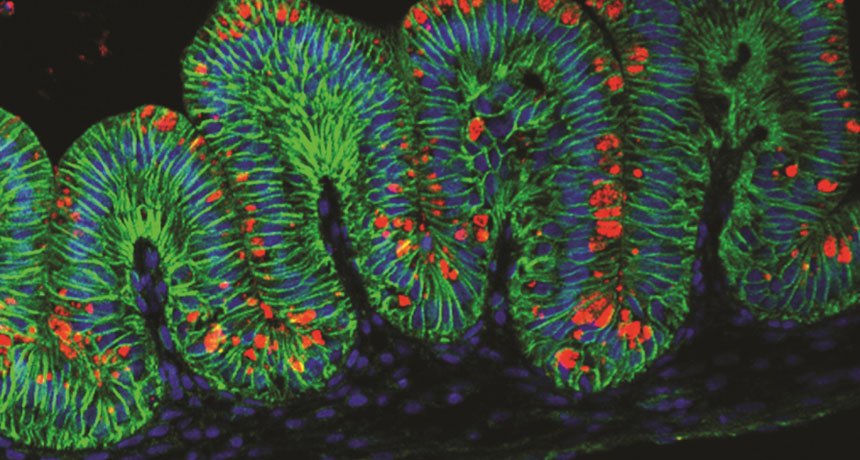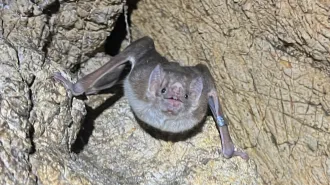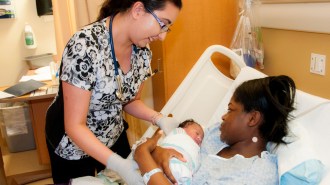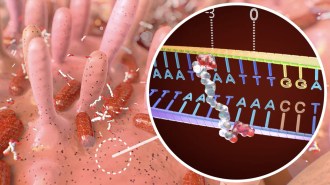Mini stomachs grown in lab
Clumps of gastric cells could help researchers study disease

LAB-GROWN BELLY Human stomach tissue (marked with glowing green tags) grown in a dish contains mucus-making cells (red), just like real stomachs do. The mini organs could help scientists study human gastric disease.
Kyle McCracken







